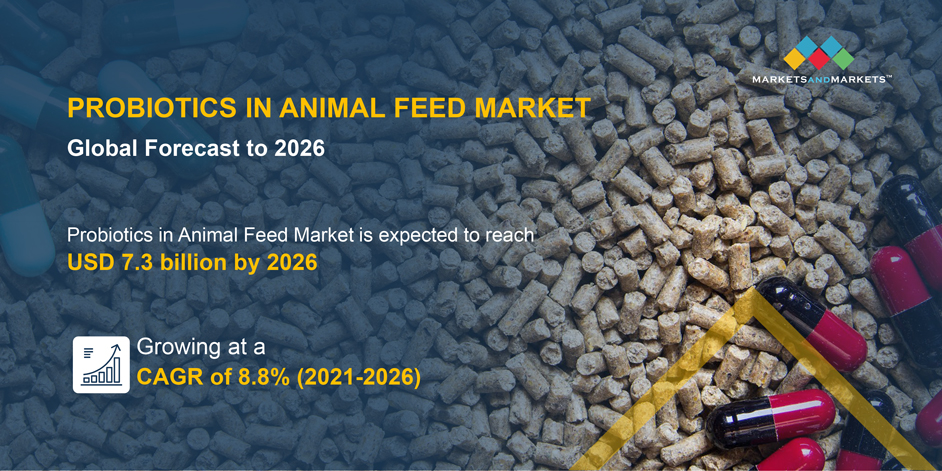The global probiotics in animal feed market is expected to reach revenue of USD 7.3 billion by 2026, at a CAGR of 8.8%. The global market was valued at USD 4.4 billion in 2020, and estimated to reach about USD 4.8 billion in 2021.
Probiotics are live microorganisms that, when consumed in sufficient amounts, provide a health benefit to the host. In recent years, the use of probiotics in animal feed has become increasingly popular as a means of improving animal health and performance. The state of probiotics in the animal feed market is one of growth and innovation, as new research continues to demonstrate the benefits of probiotic use in a variety of animal species.
One of the main drivers of the growth of probiotics in the animal feed market is the increasing demand for high-quality animal products. Consumers are becoming more conscious of the impact that animal production has on the environment and the health of animals. As a result, they are demanding products that are produced in a more sustainable and humane way. Probiotics are one way that animal producers can meet these demands, as they can improve the health and well-being of animals without the use of antibiotics or other chemicals.
Another driver of the growth of probiotics in the animal feed market is the increasing awareness of the importance of gut health in animals. The gut is home to a complex ecosystem of microorganisms that play a crucial role in the health and well-being of the host. Probiotics can help to maintain a healthy balance of gut bacteria, which can improve digestion, boost immunity, and reduce the risk of diseases. This is particularly important for animals that are raised in intensive farming systems, where stress and poor diet can lead to gut dysbiosis and other health problems.
The use of probiotics in animal feed is not without challenges, however. One of the main challenges is the lack of standardization in the probiotic industry. There are many different types of probiotics available, and they vary widely in terms of quality, efficacy, and safety. This makes it difficult for animal producers to choose the right probiotic for their animals, and it also makes it difficult for researchers to compare the results of different studies.
Another challenge is the lack of regulation of probiotics in the animal feed market. While there are guidelines and regulations in place for the use of probiotics in human food and supplements, there is currently no regulatory framework for probiotics in animal feed. This means that there is no oversight of the quality or safety of probiotics that are used in animal feed, which can lead to potential risks for both animals and consumers.
Despite these challenges, the state of probiotics in the animal feed market is one of growth and innovation. New research is continuing to demonstrate the benefits of probiotic use in a variety of animal species, and new probiotic products are being developed to meet the specific needs of different animals. As consumers continue to demand high-quality animal products that are produced in a more sustainable and humane way, the use of probiotics in animal feed is likely to become even more popular in the future.


